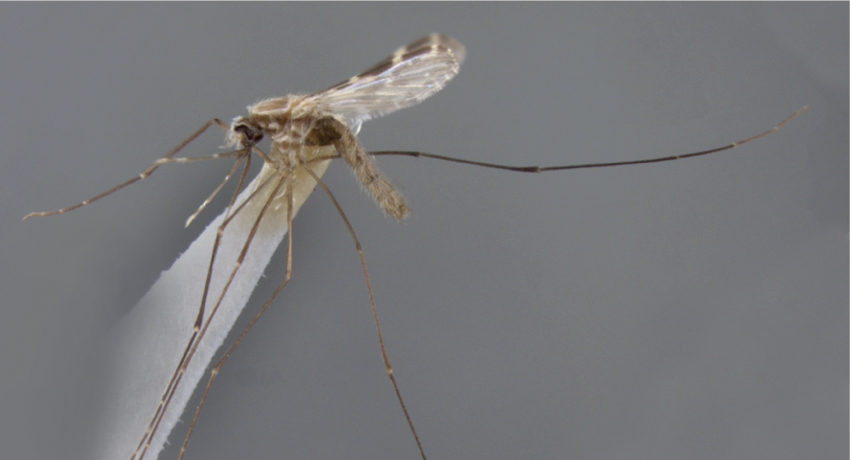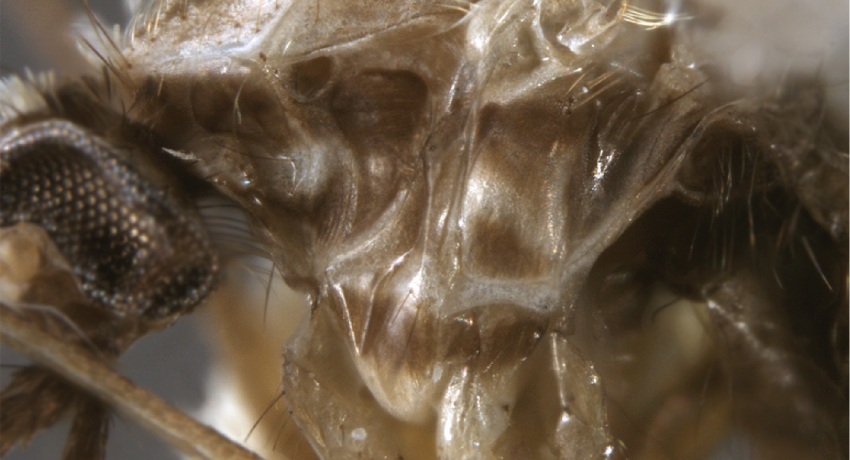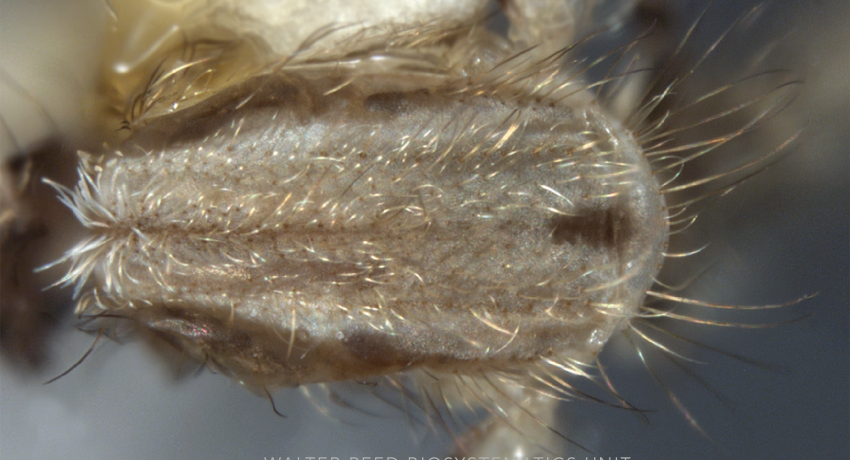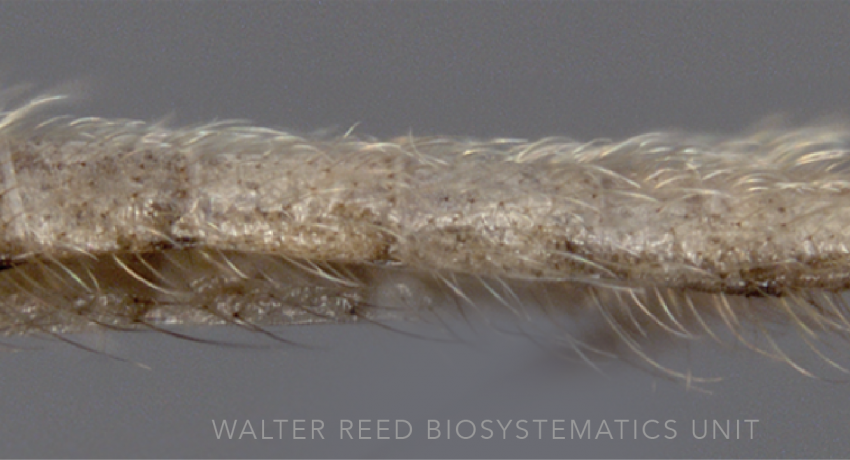ORIENTAL REGION
Etymology: not known [in German (third rib without a black spot toward the base); possibly refers to absence of dark spot on R separating sector pale spot from the accessory sector pale spot]
Anopheles aconitus belongs to the Aconitus Subgroup (Funestus Group), together with An. filipinae Manalang, An. mangyanus (Banks), An. pampanai Büttiker & Beales, and An. varuna Iyengar. Anopheles aconitus has two recognized synonyms: An. albirostris Theobald, An. brahmacharii Christophers. Four karyotypic forms of An. aconitus have been reported - Form A (X1, X2, Y1), Form B (X1, X2, Y2), and Form C (X1, X2, Y3), all found in sympatry in Maetang District, Chiang Mai Province, northern Thailand, and Form D (X3, X4, Y4) from Java, Indonesia. A recent SEM study on egg morphology and morphometrics concluded that karyotypic form B and C are conspecific.
Type locality: Kajoe-Tanam, [North of Padang, Tapanuli], Sumatra & Willem island, Soekaboemi, Java
Type depository: Zoologisches Museum der Humboldt Universität, Berlin, Germany
DIAGNOSTIC CHARACTERS (Click photos to view; mouse over and click large photo to zoom in.)
ADULT (illustrated): Head: Proboscis pale distally; palpus with 3 pale bands; preapical dark palpal band variable from as long as the two adjoining pale bands to completely absent; vertex with white erect scales. Thorax: Antepronotal scales absent; anterior promontory with long, white, slender scales; scutum center appearing nearly bare except for setae, or with slender seta-like pale scales reaching to scutellum. Legs: Legs entirely dark or with narrow apical pale bands or dorsal patches on some tarsomeres. Wing: Costal area with ≥4 dark spots; hind margin of wing usually with pale fringe spot at vein 1A; vein 1A with two dark spots on distal 0.5; vein R2 with median pale spot. Abdomen: Abdominal segments VII and Vlll and female cercus without scales.
LARVA (not illustrated): Head: Seta 2-C aciculate; seta 4-C branched. Thorax: Only 1 of setae 9,10-T single. Abdominal segments: Tergal plates on segments IV-VII large, enclosing small median accessory tergal plates.
TAXONOMIC KEYS
Nguyen Thuong Hien 1968
Lee et al. 1987b
Darsie & Pradhan 1990
Rattanarithikul & Harrison 1973
Rattanarithikul et al. 2006b
![]()
WRBU - Genera - Global - Larva
![]()
WRBU - Anopheles - Indomalayan Region - Adult
![]()
WRBU - Anopheles - Indomalayan Region - Larva
![]()
WRBU - Anopheles - Oriental Region - Adult
![]()
WRBU - Anopheles - Oriental Region - Larva
Exemplar DNA sequences
An. aconitus COI: AY423055, DQ000253-64
BIONOMICS
Immatures
Immature An. aconitus s.l. are found in clear, fresh water sites with little or no water movement, including rice fields, ponds, marshes, swamps, river bed pools, ditches, and irrigation channels. Reports exist of immatures collected in wells, wheel ruts and hoof prints.
Adults
Anopheles aconitus s.l. are common in agricultural lands and forest edge habitats, from sea level to 800 m (occasionally at 1000 m). Peak adult abundance coincides with rice harvests (March–April, August–September), when plants are around 1.5m high. Although primarily zoophilic, Anopheles aconitus s.l. will readily feed on man in areas where cattle are scarce. The species are both exophilic and endophilic, feeding from dusk to around midnight, and can play a significant role in malaria transmission at high densities. Anopheles aconitus karyotype form B/C is susceptible to laboratory infection with both Plasmodium falciparum and P. vivax. Indonesian populations of An. aconitus (presumably form D) are considered primary malaria vectors, but the vector status of Form A remains unknown.
DISTRIBUTION NOTES
Bangladesh, Bengal, Bhutan, Cambodia, India (includes Andaman Islands), Laos, Indonesia (Flores, Java, Kalimantan, Moluccas, Sulawesi, Sumatra including Ketulauan Riouw Archipelago, Timor, West Papua), Japan, Malaysia, Myanmar, Nepal, Pakistan, People's Republic of China (includes Hainan, Hong Kong), Philippines, Sri Lanka, Thailand, Timor, Vietnam
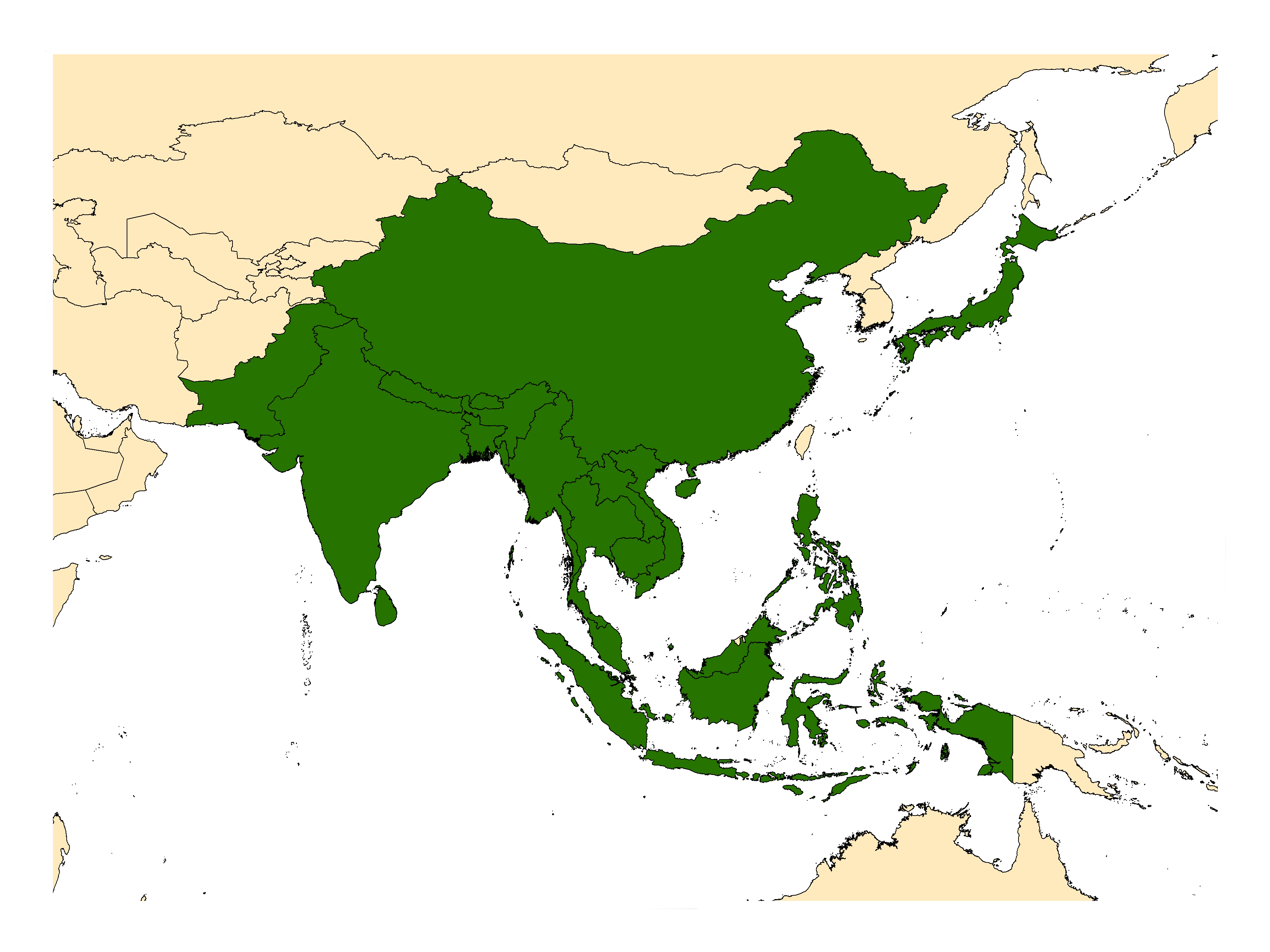
WRBU VECTOR HAZARD REPORTS
View other WRBU Vector Hazard Reports
Available GIS Models:
IMPORTANT REFERENCES (full citations below)
Dönitz 1902: English translation
Christophers & Barraud 1931: 183 (E*)
Christophers 1933: 216 (M*, F*, L*, E)
Crawford 1938: 86 (P*)
Bonne-Wepster & Swellengrebel 1953: 365 (M*, F*, L*)
Nguyen Thuong Hien 1968 (F*, L*; keys, taxonomy, bionomics, Vietnam)
Reid 1968: 320 (M*, F*, P*, L*, E*; distribution)
Aslamkhan 1971b (distribution; Pakistan)
Harrison 1980: 33 (M*, F*, P*, L*; distribution)
Lee et al. 1987b: 117 (F key, taxonomy, bionomics, distribution, review)
Darsie & Pradhan 1990 (F, L; taxonomy, keys, bionomics, distribution; Nepal)
Baimai et al. 1996 (chromosomes)
Whelan & Hapgood 2000 (bionomics, distribution; East Timor)
Chen et al. 2003 (molecular phylogenetics)
Rattanarithikul & Harrison 1973 (L*; key, Thailand)
Garros et al. 2005b (phylogenetics)
Rattanarithikul et al. 2006b (F*, L*; bionomics, distribution, keys)
Sinka et al. 2011: 89 (bionomics review, distribution, niche model)
Chen et al. 2012 (genetics)
Chen et al. 2012 (population genetics)
Namgay et al. 2018 (distribution, bionomics; Bhutan)
CURRENT SYNONYMS
syn. albirostris Theobald
1903a: 24 (M, F*; Myzomyia). Type locality: Malaya [Malaysia] (NHMUK). References: Harrison 1980: 38 (lectotype designation, synonymy).
syn. brahmacharii Christophers
1912: 186 (F*; Myzomyia). In: Brahmachari Bahadur 1912. Type locality: Calcutta [West Bengal], India (MSI).
CITED REFERENCES
Aslamkhan, M. (1971b). The mosquitoes of Pakistan I. A checklist. Mosquito Systematics, 3(4), 147–159.
Baimai, V., Kijchalao, U., & Rattanarithikul, R. (1996). Metaphase karyotypes of Anopheles of Thailand and southeast Asia: V. The Myzomyia series, subgenus Cellia (Diptera: Culicidae). Journal of the American Mosquito Control Association, 12(1), 97–105
Barraud, P. J., & Christophers, S. R. (1931). On a collection of anopheline and culicine mosquitoes from Siam. Records of the Malaria Survey of India, 2(2), 269–285.
Bonne-Wepster, J., & Swellengrebel, N.H. (1953). The anopheline mosquitoes of the Indo-Australian Region. Amsterdam: J. H. de Bussy.
Chen, B., Butlin, R.K., & Harbach, R.E. (2003). Molecular phylogenetics of the Oriental members of the Myzomyia Series of Anopheles subgenus Cellia (Diptera: Culicidae) inferred from nuclear and mitochondrial DNA sequences. Systematic Entomology, 28(1), 57–69.
Chen, B., Harbach, R.E., Walton, C., He, Z., Zhong, D., Yan, G., & Butlin, R.K. (2012). Population genetics of the malaria vector Anopheles aconitus in China and Southeast Asia. Infection, Genetics and Evolution, 12(8), 1958–1967.
Christophers, S.R. (1912). [Anopheles brahmachari]. Paludism (Simla), 5.
Christophers, S.R. (1933). The fauna of British India, including Ceylon and Burma. Diptera. Vol. IV. Family Culicidae. Tribe Anophelini. London: Taylor and Francis.
Christophers, S.R., & Barraud, P.J. (1931). The eggs of Indian Anopheles, with descriptions of the hitherto undescribed eggs of a number of species. Records of the Malaria Survey of India, 2(1), 161–192.
Crawford, R. (1938). Some anopheline pupae of Malaya with a note on pupal structure. Singapore: Printed at the Government Printing Office, by W.T. Cherry, Government Printer.
Darsie, R.F., Jr., & Pradhan, S.P. (1990). The mosquitoes of Nepal: Their identification, distribution and biology. Mosquito Systematics, 22(2), 69–130.
Dönitz, W. (1902). Beitrage zur Kenntniss der Anopheles. Zeitschrift fur Hygiene, 41, 15–88.
Garros, C., Harbach, R.E., & Manguin, S. (2005b). Systematics and biogeographical implications of the phylogenetic relationships between members of the Funestus and Minimus Groups of Anopheles (Diptera: Culicidae). Journal of Medical Entomology, 42(1), 7–18.
Harrison, B.A. (1980). Medical entomology studies - XIII. The Myzomyia Series of Anopheles (Cellia) in Thailand, with emphasis on intra-interspecific variations (Diptera: Culicidae). Contributions of the American Entomological Institute, 17(4), 1–195.
Lee, D.J., Hicks, M.M., Griffiths, M., Debenham, M.L., Bryan, J.H., Russell, R.C., . . . Marks, E.N. (1987b). The Culicidae of the Australasian region. Volume 5. Commonwealth Department of Health, School of Public Health and Tropical Medicine Monograph Series, 2.
Namgay, R., Drukpa, T., Wangdi, T., Pemo, D., Harbach, R.E., & Somboon, P. (2018). A checklist of the Anopheles mosquito species (Diptera: Culicidae) in Bhutan. Acta Tropica 188 (2018) 206–212.
Nguyen Thuong Hien (1968). The genus of Anopheles in Vietnam. Saigon: Bureau of Entomology, National Malaria Program/ Republic of Vietnam. English translation by Military Entomology Information Service. 205pp.
Rattanarithikul, R., & Harrison, B.A. (1973). An illustrated key to the Anopheles larvae of Thailand. U S Army Medical Component, SEATO, Bangkok, Thailand.
Rattanarithikul, R., Harrison, B.A., Harbach, R.E., Panthusiri, P., & Coleman, R.E. (2006b). Illustrated keys to the mosquitoes of Thailand. IV. Anopheles. Southeast Asian Journal of Tropical Medicine and Public Health, 128(Supplement 2), 2.
Reid, J.A. (1968). Anopheline mosquitoes of Malaya and Borneo. Studies from the Institute for Medical Research Malaysia, 31, 1–520.
Sinka, M.E., Bangs, M.J., Manguin, S., Chareonviriyaphap, T., Patil, A.P., Temperley, W.H., ... Hay, S.I. (2011). The dominant Anopheles vectors of human malaria in the Asia-Pacific region: Occurrence data, distribution maps and bionomic précis. Parasites & Vectors, 4(1), 89.
Theobald, F.V. (1903a). A monograph of the Culicidae of the World (Vol. 3). London: British Museum (Natural History). 359pp
Whelan, P., & Hapgood, G. (2000). A mosquito survey of Dili, East Timor, and implications for disease control. Arbovirus Research in Australia, 8, 405–416.
CITE THIS PAGE
Walter Reed Biosystematics Unit (Year). Anopheles aconitus species page. Walter Reed Biosystematics Unit Website, http://wrbu.si.edu/vectorspecies/mosquitoes/aconitus, accessed on [date (e.g. 03 February 2020) when you last viewed the site].

